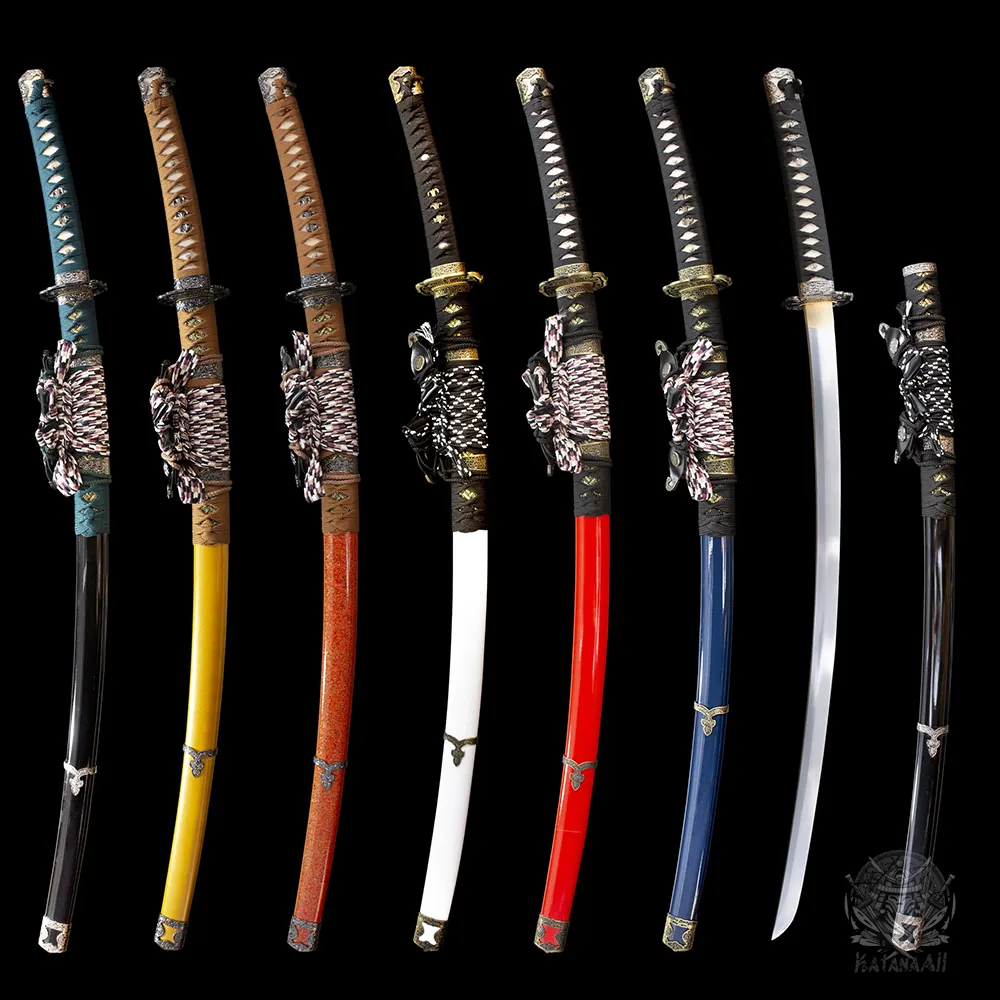
The katana, often hailed as the pinnacle of sword craftsmanship, has captured the admiration of collectors, martial artists, and enthusiasts worldwide. However, not all katanas are created equal. While some are painstakingly handcrafted by master swordsmiths, others are mass-produced for decorative or entry-level martial arts use. For those seeking authenticity, understanding the key differences between handmade katanas and mass-produced blades is essential. This guide explores the distinguishing features to help you make an informed decision.
1. The Crafting Process: Traditional vs. Modern Manufacturing
Handmade katanas are forged using traditional techniques that date back centuries. Master swordsmiths meticulously heat, fold, and hammer high-carbon steel, a process that removes impurities and enhances the blade’s strength and flexibility. The steel is often folded multiple times to create the distinctive grain patterns known as hada. The edge is tempered to achieve an optimal balance of sharpness and durability, resulting in a functional and artistic weapon.
In contrast, mass-produced blades are typically made using modern industrial methods, such as machine cutting and stamping. While this process is quicker and more cost-effective, it often sacrifices the craftsmanship and attention to detail found in handmade swords. Most mass-produced katanas are made from mono-steel, which lacks the unique characteristics of traditionally folded steel.
2. Blade Appearance: Identifying the Unique Characteristics
One of the most telling signs of a handmade katana is the hamon, a wavy or straight line along the blade’s edge. This line is created during the differential hardening process, where the spine and edge of the blade are cooled at different rates. A genuine hamon has a natural, irregular appearance, with intricate details that vary from sword to sword.
Mass-produced katanas often feature an etched or laser-engraved hamon, which appears uniform and lacks the depth and texture of a real one. If the hamon looks too perfect or seems to be painted on, it is likely a mass-produced blade.
3. Materials Used: Steel Quality and Fittings
Handcrafted katanas are made from high-quality materials. The blade is usually forged from tamahagane (traditional Japanese steel) or modern high-carbon steel equivalents, which offer excellent edge retention and toughness. The fittings, such as the tsuba (guard) and fuchi-kashira (pommel and collar), are often crafted from brass, iron, or copper and adorned with intricate designs.
Mass-produced katanas, on the other hand, are often made from lower-grade stainless steel or alloys. These materials are less durable and are primarily intended for display rather than functional use. The fittings are usually made from cheaper materials like zinc alloy, and the designs are often mass-cast rather than hand-carved.
4. Weight and Balance: Practicality in Use
A handmade katana is precisely balanced, with weight distribution carefully calculated to ensure smooth handling and effective cutting. The sword feels like an extension of the wielder’s arm, making it ideal for martial arts practice and cutting demonstrations (tameshigiri).
Mass-produced katanas, due to their assembly-line construction, often lack the fine-tuned balance of handmade swords. They may feel overly heavy, unwieldy, or poorly balanced, which can affect their performance and make them unsuitable for serious practice.
5. Price: A Reflection of Craftsmanship
Handmade katanas are a significant investment, reflecting the time, skill, and materials required to produce them. A genuine handmade katana from a reputable smith can range from several thousand to tens of thousands of dollars, depending on the blade’s quality, history, and customization.
Mass-produced katanas are much more affordable, typically ranging from $50 to $500. While they may serve as a decorative piece or an entry-level practice tool, they lack the artistry and functional integrity of a handmade blade.
6. Authentication and Certification
Authentic handmade katanas often come with documentation proving their origin. This may include a certificate from the swordsmith, details about the forging process, and information about the blade’s materials and features. In Japan, traditional swordsmiths are licensed, and their swords are registered with a unique number engraved on the tang (nakago).
Mass-produced katanas rarely include such documentation, and their origins are often ambiguous. If a seller cannot provide clear information about a katana’s provenance, it is likely mass-produced.
7. Intended Use: Decoration vs. Functional Art
Handmade katanas are functional works of art, designed for serious collectors, martial artists, and enthusiasts who appreciate traditional craftsmanship. They are capable of cutting through targets like bamboo and tatami mats with ease and precision.
Mass-produced katanas are often designed for decoration or light use. While they may look visually appealing, they are not built for rigorous cutting practice and may even pose safety risks if used improperly.
Conclusion
Distinguishing a handmade katana from a mass-produced blade requires careful attention to detail and a deep appreciation for the art of sword-making. By examining the crafting process, blade characteristics, materials, balance, and documentation, you can identify a genuine handmade katana and ensure you’re investing in a piece of history and craftsmanship. Whether you’re a collector, practitioner, or enthusiast, understanding these differences will help you choose a katana that truly meets your needs and expectations.
